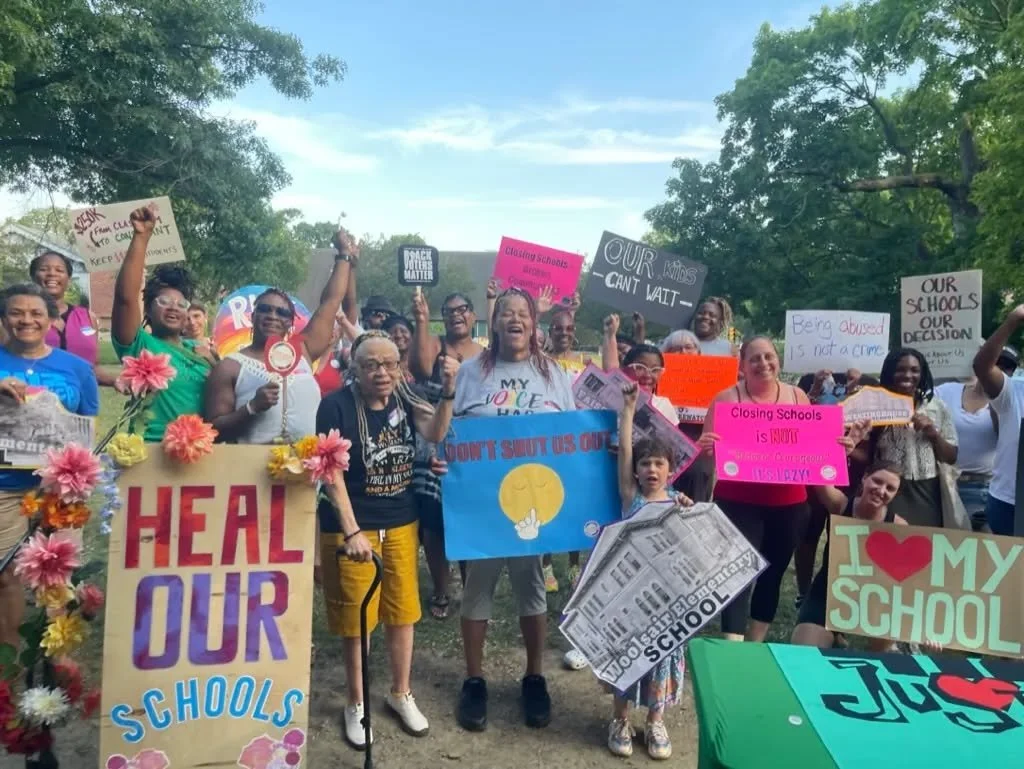Speak up before it’s too late!
Your student could be relocated next school year.
6,000+ PPS students will have their learning disrupted.
…Unless you tell the PPS Board of Directors:
Vote NO on the “Future-Ready Facilities” Plan
LINKS TO TAKE ACTION
Demands for the PPS Board
Vote NO on November 25
The PPS Board must vote NO on this BAD plan that puts our kids and communities at risk.
Build a plan WITH us, not AT us
Students, families, teachers, staff, and communities must help create a new plan from the ground up.
Do a REAL equity analysis
Before closing ANY schools, PPS must study and transparently share findings:
What happened when PPS closed schools in the past
Current inequities in our district
How to move forward WITHOUT making things worse
Talking points
Vote NO on November 25
The Board must Vote NO on this flawed plan that puts our kids and communities at risk.
The F.U. Plan is a failure! F-
Basic questions we've been asking for 2 years have not been answered. They still haven't shared staffing details for each school.
They haven't shown their work—we don't know what's at schools now or what will be there after.
Next school year, over 6,000 students move to different schools with ZERO benefit.
No equity analysis
PPS cannot show us what we have now versus what will be more equitable after implementation. The students already facing the biggest barriers will be forced to move schools—but we don't have details on WHO will be impacted, HOW equity will be measured, or HOW the Superintendent will be held ACCOUNTABLE.
Rushed process, no real input
No public hearing after the Implementation Plan was released
Board community meetings came too little, too late
Vote crammed in during Thanksgiving week—just like they held public input during summer vacation when families are least engaged
The math doesn't add up
Budget analysis doesn’t add up, uses #FuzzyMath, and ignores future costs when students leave for charter schools.
Meanwhile, 152.5 staff positions will be cut next year. We need MORE staff, not less.
Dr. Walters has proposed a 4% property tax increase in next year’s budget
Real consequences for students
Overcrowded classrooms and buses
No plan for Community Schools services to continue for students
Plan for students with disabilities risks denying FAPE—opening the district to legal action
Equity by the numbers
The plan disproportionately harms our most vulnerable students:
5 of 9 closing schools are MAJORITY BLACK STUDENTS
6 of 9 closing schools have disproportionate numbers of STUDENTS WITH IEPs
Black students are 49.88% of PPS enrollment but 54.16% of students forced to move (3,855 of 7,118)
White students are 29.75% of PPS enrollment but only 26.06% of students who move (1,855 of 7,118)
39.5% of students with IEPs will be forced to relocate (1,687 of 4,274)
26.4% of English Language Development students will be required to attend different schools (474 of 1,798)
17.1% of homeless students are slated to move, threatening their legal right to continuity of education (108 of 631)
History repeats; lessons ignored
Previous school closures showed us:
No cost savings
No improvement in student outcomes
Why would this time be different? PPS is perpetuating the STATUS QUO.
Applications for new Charter Schools are expected to be submitted on Nov. 17, including a Montessori school.
IT'S NOT TOO LATE
It's not too late to say NO to this plan.
It's not too late to say YES to our kids.
It's not too late to say NO to hurting students.
We have no confidence
We've fought for 2 years because this process was broken from the start. We have no confidence that PPS can execute this plan. Our kids deserve better. Vote NO!

